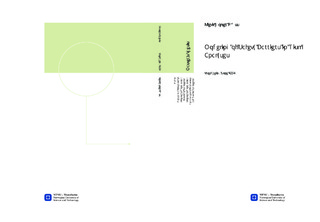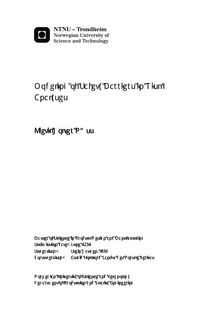| dc.description.abstract | In recent years, the concept of safety barriers has become increasingly popular in regulations and standards for the offshore oil and gas industry, both in Norway and internationally. There are requirements from the Petroleum Safety Authority Norway and operators in the oil and gas industry that the condition of both technical and human/organizational safety barriers on installations should be reflected in risk analyses. However, implementing this in a manner which supports appropriate analysis- and decision making processes has proved to be difficult. The peformance of barriers is often not explicitly modeled in analyses, and human/organizational aspects are often not addressed in detail. This master thesis examines how safety barriers can be modeled in risk analyses, and to which level of detail this can be achieved. A comprehensive literature review is performed in order to examine how the concept of safety barriers is defined, and which barrier properties are used to categorize and measure the performance of barriers. In addition, relevant standards and guidelines for the offshore oil and gas industry are reviewed in order to identify which barriers are important for offshore operations. A brief case study of blowouts is performed to illustrate how safety barriers are implemented on oil and gas installations. Methods and techniques for modeling safety barriers in risk analyses are reviewed and presented. The different objectives of risk analysis, and the relevant barrier properties for risk analyses, are discussed. The tools developed in "Barrier and Operational Risk Analysis", "Hybrid Causal Logic in Offshore Risk Analysis" and "Risk Modelling - Integration of Organizational, Human and Technical Factors" are included in the discussion. The current approach for quantitative risk analysis in DNV is presented briefly. Based on these discussions, two main suggestions for improvement are identified: 1. Include relevant barrier functions for each scenario as events in event tree models. 2. When appropriate and practicable, the technical and human/organizational condition of barriers should be taken into account using fault tree and/or Risk Influence Diagram/ Bayesian Belief Network models. Safety barriers should be included more consistently in event trees in order to better illustrate the effect of barriers on major accident risk, and to allow for explicit modeling of the barrier systems implemented to perform each barrier function. Fault tree and bayesian belief network analysis can be applied to model both the technical and human/organizational condition of barrier systems. It is suggested that simplified methods for adjusting industry average probabilities are applied for the modeling of risk influencing factors. Because of the massive workload and amount of data required for detailed statistical modeling of each risk influencing factor, these simplified methods are considered to be a more feasible alternative. While it may seem inappropriate to tamper with probabilities which are based on historical data, it is important to consider whether the historical data accurately reflects the object under analysis. If conditions differ from the industry average, industry average numbers will not reflect the reality of the specific installation. Using adjusted probabilities will be particularly useful when barriers are found to be in worse condition than than the industry average, because this means the average frequencies will be artificially optimistic. In this case, an adjusted probability will be a conservative estimate. It should be noted that the energy-barrier perspective has received criticism from some researchers because it is based on linear causal chains, and does not account for complex interactions in larger socio-technical systems. While the approach does have its shortcomings, methods based on the barrier approach have proved to be useful and suitable for a number of applications. The approach is also continuously improved, as manifested by the introduction of bayesian belief networks in traditional risk analysis. | nb_NO |

